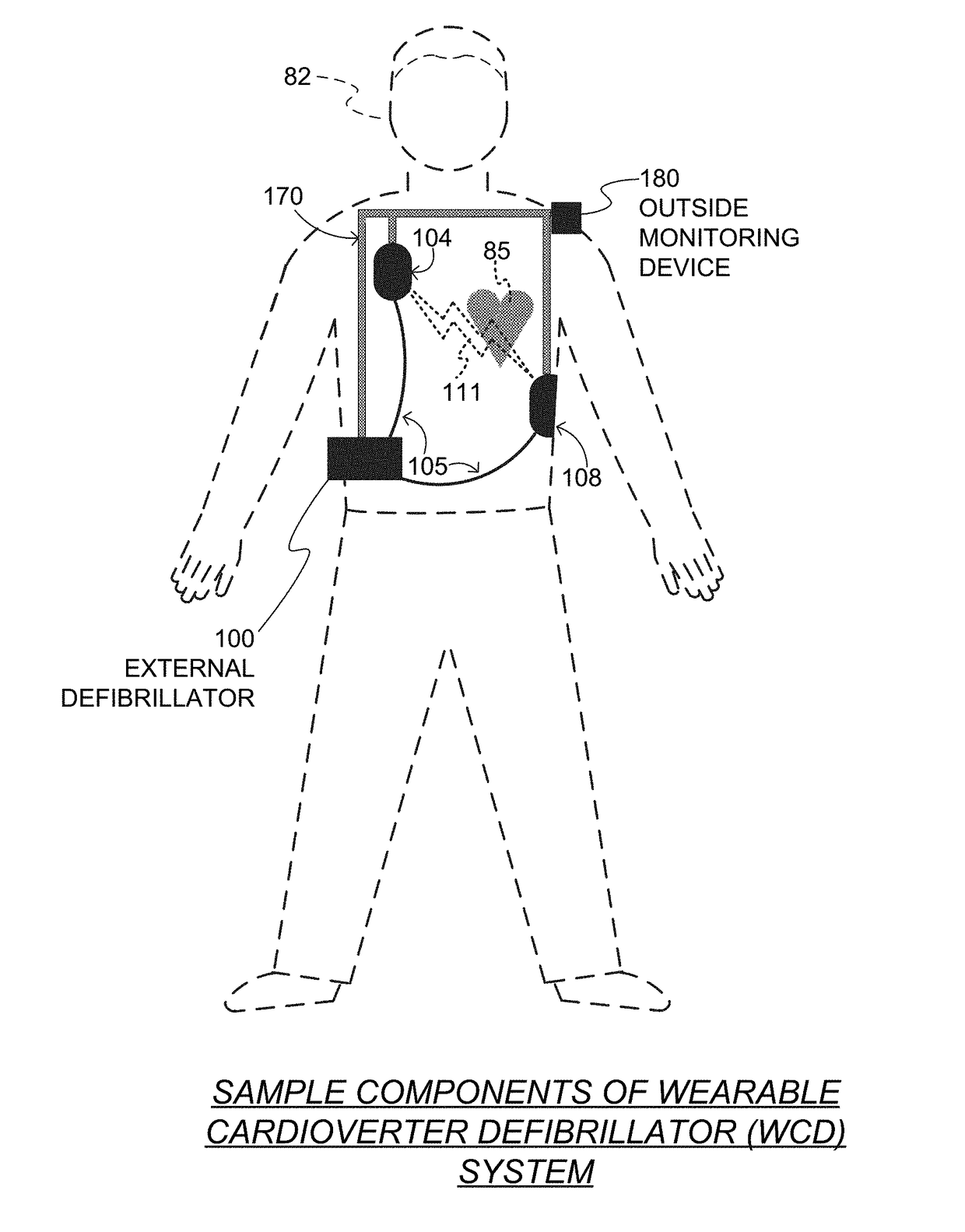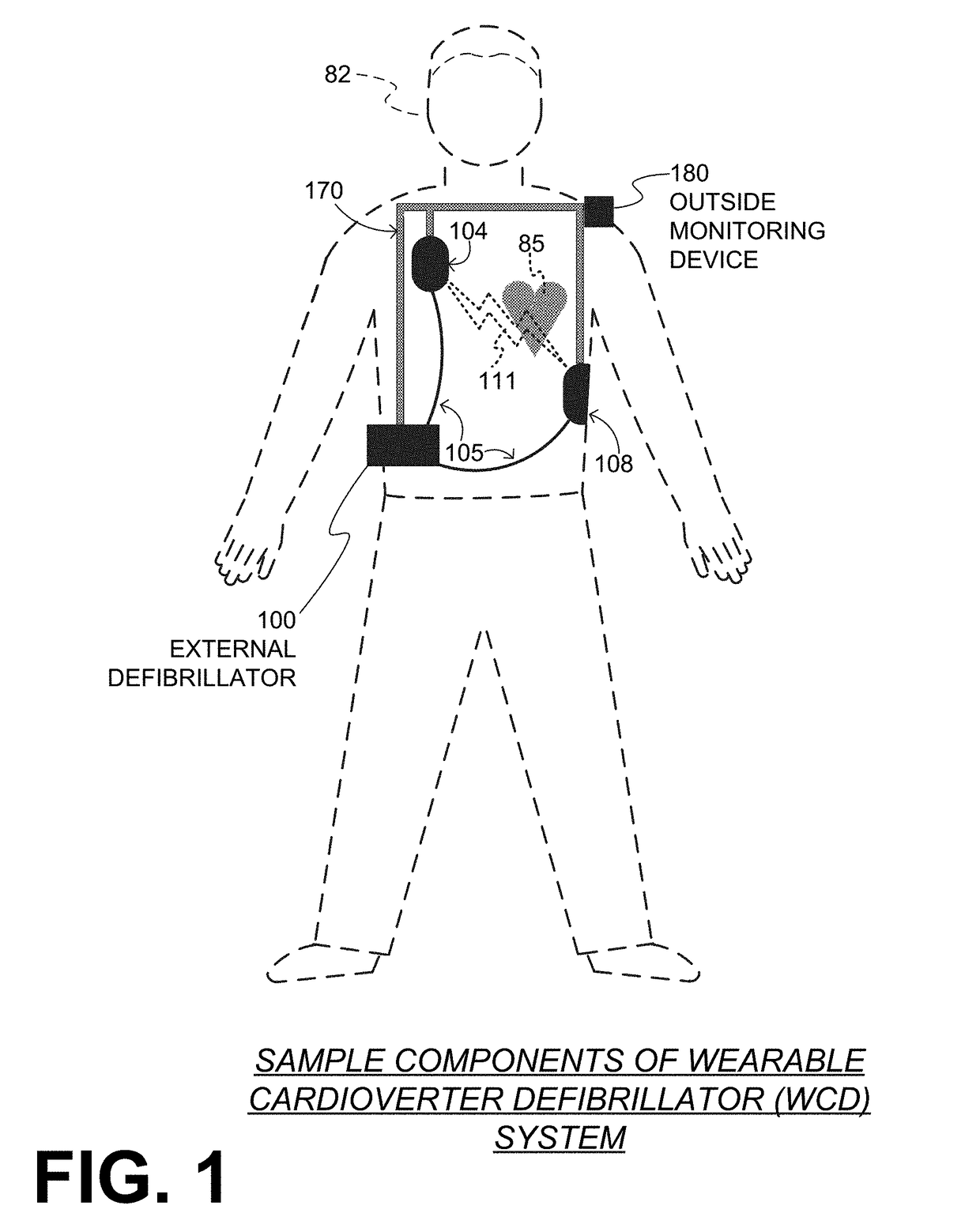Wearable cardioverter defibrillator (WCD) system computing patient heart rate by multiplying ECG signals from different channels
a cardioverter defibrillator and wearable technology, applied in the field of wearable cardioverter defibrillators (wcd) systems, can solve the problems of patient heart rate fluctuation, increased risk of sca, and affecting patient heart rate,
- Summary
- Abstract
- Description
- Claims
- Application Information
AI Technical Summary
Benefits of technology
Problems solved by technology
Method used
Image
Examples
Embodiment Construction
[0027]As has been mentioned, the present description is about wearable cardioverter defibrillator (WCD) systems, and related storage media, programs and methods. Embodiments are now described in more detail.
[0028]A wearable cardioverter defibrillator (WCD) system made according to embodiments has a number of components. These components can be provided separately as modules that can be interconnected, or can be combined with other components, etc.
[0029]FIG. 1 depicts a patient 82. Patient 82 may also be referred to as a person and / or wearer, since the patient is wearing components of the WCD system. Patient 82 is ambulatory, which means patient 82 can walk around, and is not necessarily bed-ridden.
[0030]FIG. 1 also depicts components of a WCD system made according to embodiments. One such component is a support structure 170 that is wearable by patient 82. It will be understood that support structure 170 is shown only generically in FIG. 1, and in fact partly conceptually. FIG. 1 is...
PUM
 Login to View More
Login to View More Abstract
Description
Claims
Application Information
 Login to View More
Login to View More - R&D
- Intellectual Property
- Life Sciences
- Materials
- Tech Scout
- Unparalleled Data Quality
- Higher Quality Content
- 60% Fewer Hallucinations
Browse by: Latest US Patents, China's latest patents, Technical Efficacy Thesaurus, Application Domain, Technology Topic, Popular Technical Reports.
© 2025 PatSnap. All rights reserved.Legal|Privacy policy|Modern Slavery Act Transparency Statement|Sitemap|About US| Contact US: help@patsnap.com



